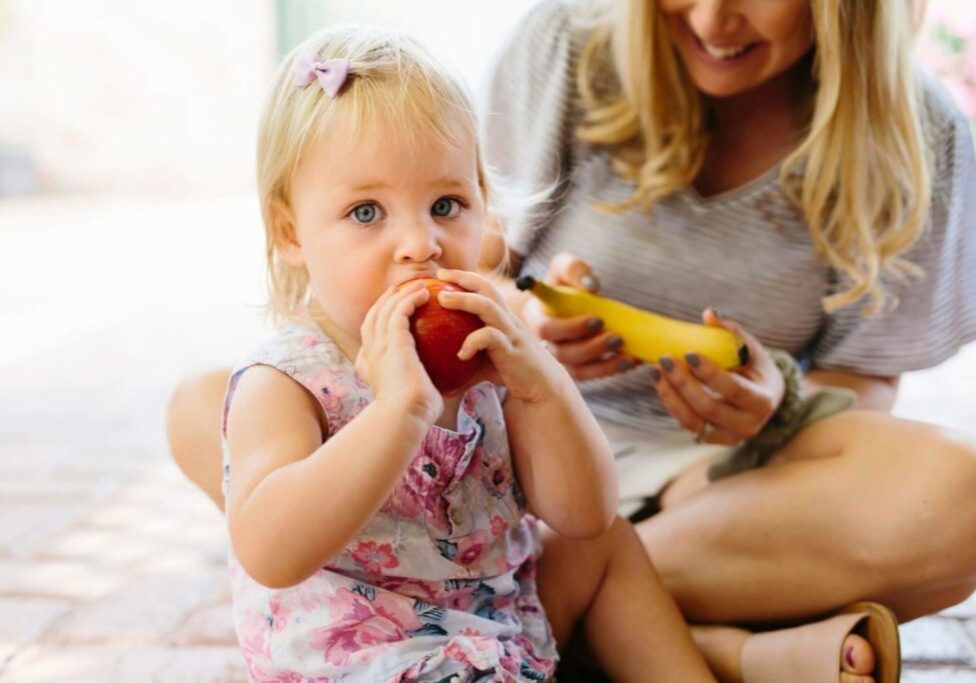School Mealtimes Introduction
It can feel really uncomfortable to send your child off to school, only for them to come home with some new and worrying beliefs about food. If you're concerned about what your child is telling you about mealtimes at school, please use the steps below to advocate for positive change.
Parents, teachers and schools can all work together to improve the food environments our children are growing up in.
School Mealtimes Step 1: Do some research
Look up your school’s Healthy Food and Drink policy and get to know it. Some policies are available from the school's own website or you can try searching [Insert school name]’s Healthy Food and Drink policy on Google. If you can’t find it online, ask your school’s administration staff for assistance.
Use the policy to help you understand what the school or childcare centre has committed to upholding.
There's a high chance that your school will not have a comprehensive policy relating to lunchboxes or eating environments at school. Our 2022 Western Australian School Policy audit showed that less than 10% of school had a personalised document about mealtimes at school.

School Mealtimes Step 2: Ask some questions
Before you send a long letter to your teacher or school, ask for more information. Find out from your teacher what the classroom rules are and what is actually happening. If you need to clarify something about the school's Healthy Food and Drink policy you can ask some questions here too. You could speak to the teacher face to face, or use the template below to send a short email.
INITIAL CONTACT TEMPLATE
Dear [teacher’s name],
I am writing as the parent of [child’s full name], to find out more about current school rules for mealtimes. My child has told me [insert your child’s words], and I am hoping you can help me understand the context of the situation, and if [he/she] has misinterpreted the [conversation/activity].
I would also like to learn more about [insert school name]'s Healthy Food and Drink policy. I would like to know [insert your question, see Box 1]?
I would like to discuss this further in person, or you can reach me by email or phone.
Sincerely,
[Parent name]
Box 1. Examples of questions you might ask:
School Mealtimes Step 3: Ask for change
This is when you can outline all of your concerns, provide some actual evidence and ask for the changes you would like to see. Using the template below, copy and paste the examples and evidence that are relevant to your concerns, and leave out the section headings.
FOLLOW-UP CONTACT TEMPLATE
Dear [teacher’s name],
Thank you for taking the time to reply to my previous [email/letter]. As I mentioned previously, [Child’s first name] has mentioned some things about eating at school that have concerned me. I’d like for us to work out a way to overcome them.
DESCRIBE YOUR CONCERN
[Child’s name has told me/I have noticed] that:
- [He/She] is only permitted to eat fruit and vegetables for recess
- [He/She] is required to eat a certain amount of food before being allowed to play
- [He/She] has been told to finish their sandwich before they can eat other foods in their lunchbox
- [He/She] has been told not to eat something in their lunchbox because it is an "unhealthy" food
- [He/She] has been talking about “good” and “bad” foods, which is something I have been very careful to avoid up until this time
EXPLAIN WHY YOU ARE CONCERNED
These practises are concerning for me as a parent trying to support my child to build a healthy relationship with food and their body. I would be grateful for the opportunity to discuss my concerns further with you.
PROVIDE RELEVANT EVIDENCE OR SUPPORTING POLICIES
This generation of children are growing up in a time of extreme diet culture, body dissatisfaction and disordered eating, but there are lots of things we can do to minimise harm.
[Copy and paste the relevant evidence statement(s) from the Evidence Summary page or link the page in your email]
DESCRIBE WHAT CHANGES WOULD YOU LIKE
I appreciate that you have my child’s best interests at heart, and so I ask that you:
- allow [insert Child’s name] to eat freely from their lunch box at mealtimes and
- avoid commenting (either positively or negatively) on the food they bring to school.
Please also see the attached open letter from Dr Kyla Smith, Paediatric Dietitian, and colleagues to explain further about the steps that we can take to protect our children from unintended harm at school mealtimes.
Again, I am happy to discuss this further with you by email or phone, or in person.
Sincerely,
[Parent name]
School Mealtimes Step 4: Consider taking it higher
If you feel that there are significant concerns with mealtime practises or policies, beyond your classroom teacher’s control, you can edit your letter (from Step 3) to send to your Principal. I recommend letting your classroom teacher know this once you have established that your teacher is unable to change practises, without direction from above or without a policy review.

School Mealtimes Summary
We all want what's best for our children. You are the best advocate for your child and we're here to support you to create positive change in your school.
Start by speaking to your classroom teacher about your concerns and consider discussing unresolved issues with your school principal.

Want some FREE Tools? Enter your email address to download the resource kit
Freebies for parents, teachers, schools and childcare centres:
- Open letter to schools
- Handout for parents
- Normal eating in childhood
- Suggested school policy
- Newsletter graphic
We work with our email distribution platform, ActiveCampaign, to fight spam, and comply with their anti-spam policy.









